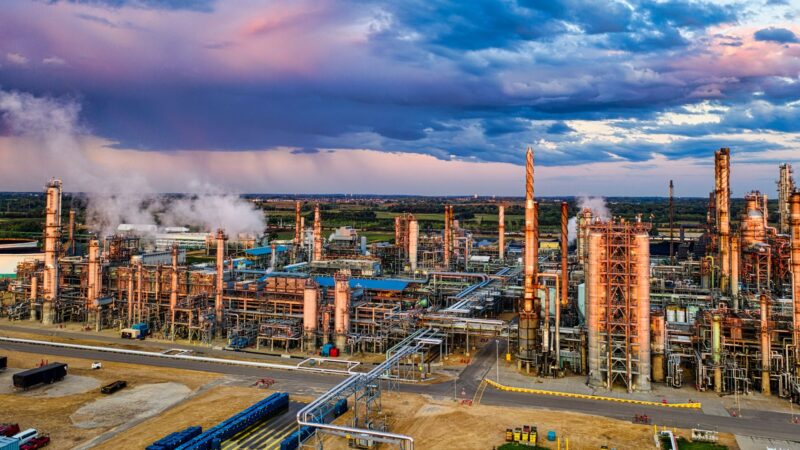How SUBs Are Enabling the Future of Agile, Scalable Biologics Production
The global biopharmaceutical industry is entering a transformative era where the demand for faster, more flexible, and cost-efficient manufacturing has never been greater. As biologics, biosimilars, and personalized therapies gain prominence, manufacturers are re-evaluating traditional approaches to production. One of the most promising innovations enabling this shift is the integration of Single-Use Bioreactors (SUBs) within continuous manufacturing (CM) platforms.
Originally developed to streamline batch processes, SUBs have now evolved into key components supporting fully integrated, high-intensity upstream processes. Their convergence with continuous manufacturing is redefining the future of bioprocessing—where modularity, efficiency, and digital integration converge.
From Steel to Single-Use: The Bioreactor Evolution
Traditional stainless-steel bioreactors have long been the backbone of biologics manufacturing. However, their inherent drawbacks—capital-intensive infrastructure, time-consuming cleaning and sterilization, and extended downtime—have spurred the shift toward disposable systems. SUBs offer pre-sterilized, polymer-based vessels designed for single use, eliminating cleaning-in-place (CIP) and sterilization-in-place (SIP) protocols.
This results in reduced turnaround times, lower contamination risk, and greater operational agility—making SUBs ideal for modern facilities, particularly those with high product diversity and smaller batch sizes.
Continuous Manufacturing: Redefining Process Strategy
Continuous manufacturing moves away from traditional batch cycles by operating in a steady-state mode. Inputs and outputs flow in a coordinated, uninterrupted stream, enabling enhanced control and reduced variability. When SUBs are employed in continuous upstream processes such as perfusion cultures, the combined benefits are substantial:
- Rapid product changeovers with minimal downtime
- High volumetric productivity through prolonged culture runs
- Lower water, energy, and chemical usage
- Modular facility design with a smaller environmental footprint
This synergy is especially attractive for applications involving monoclonal antibodies, vaccines, viral vectors, and cell therapies—where product quality, time-to-market, and regulatory compliance are critical.
Industrial Impact: Measurable Gains from Early Adopters
Pharmaceutical leaders adopting SUB-enabled continuous platforms have reported significant performance improvements. For instance, Amgen’s continuous perfusion facility in Rhode Island achieved a 70 percent reduction in facility size while improving throughput. Others have documented up to 30 percent higher yields and 40 percent shorter development timelines using SUBs in continuous culture formats.
These results underline the scalability and cost-effectiveness of this integrated approach—providing a compelling case for broader adoption across the industry.
Enabling Technologies: PAT, Automation, and Digital Control
To maintain control and quality in continuous manufacturing environments, SUBs must be integrated with advanced digital systems. Modern SUBs are now equipped with embedded single-use sensors for key parameters such as dissolved oxygen, pH, viable cell density, and glucose/lactate concentrations. These sensors enable real-time process control and form the foundation for robust Process Analytical Technology (PAT) frameworks.
In parallel, digital twin models and automation platforms are being used to simulate, monitor, and optimize continuous operations. These systems provide predictive analytics, early fault detection, and seamless batch record management, further enhancing operational reliability.
Regulatory Perspective and Quality Considerations
Regulatory agencies including the U.S. FDA and EMA have shown increasing support for continuous manufacturing under the Quality by Design (QbD) paradigm. Guidance documents, innovation offices, and regulatory pilot programs are fostering an ecosystem that encourages adoption.
Nonetheless, some concerns persist—such as material integrity over extended runs, leachables and extractables from single-use components, and supply chain variability. Addressing these issues will be essential for ensuring consistent performance and quality assurance in long-duration operations.
Looking Ahead: A Shift Toward Smart, Flexible Facilities
As the industry moves toward digitized, decentralized, and demand-driven manufacturing, the role of SUBs will only grow. Future developments may include:
- Standardized hybrid facilities combining stainless steel and SUBs
- Automated, closed-loop perfusion platforms
- Custom-designed disposable components enabled by additive manufacturing
- Integration with real-time release testing and AI-driven process control
These advancements signal a broader transition toward smart facilities—designed for rapid deployment, minimal risk, and scalable output. The integration of Single-Use Bioreactors within continuous manufacturing reflects a new operating model for the biopharmaceutical sector—more agile, more sustainable, and ultimately more capable of meeting global healthcare needs with speed and precision.






